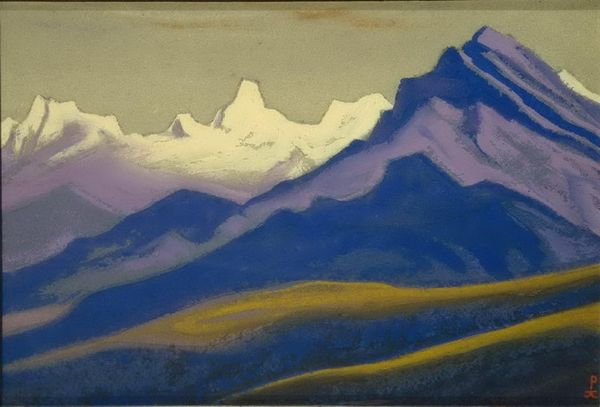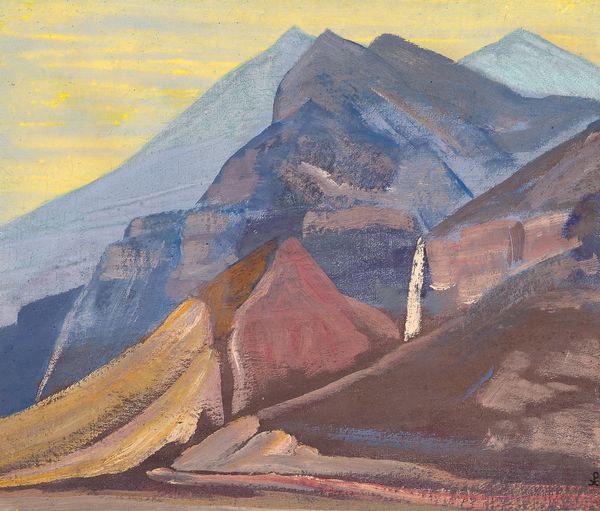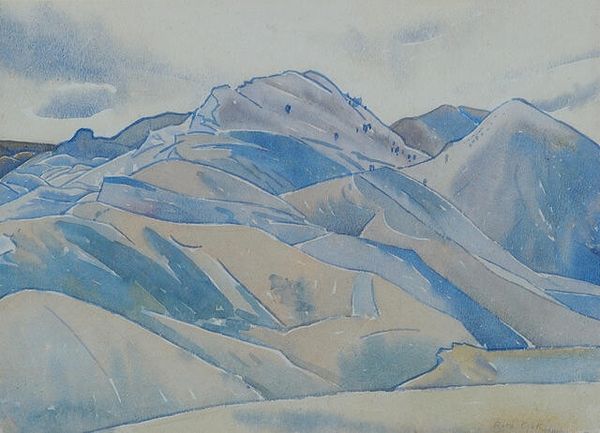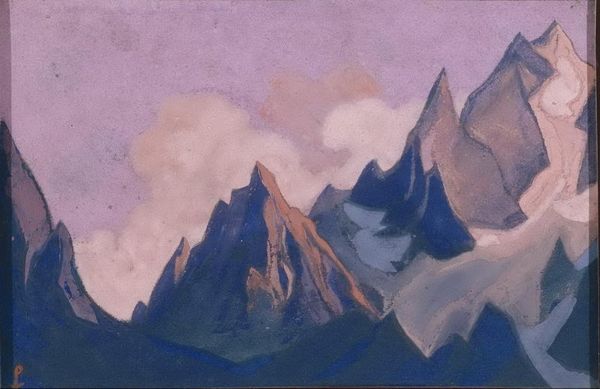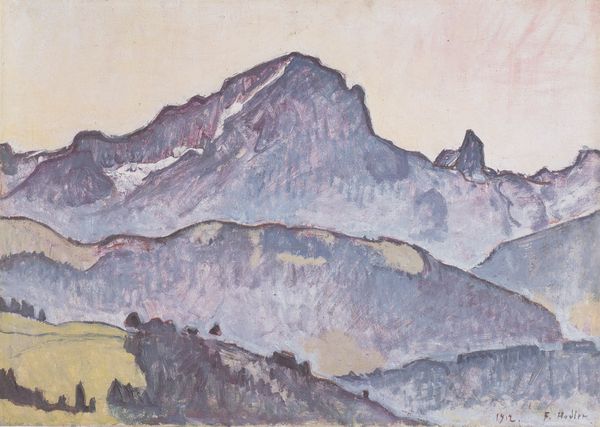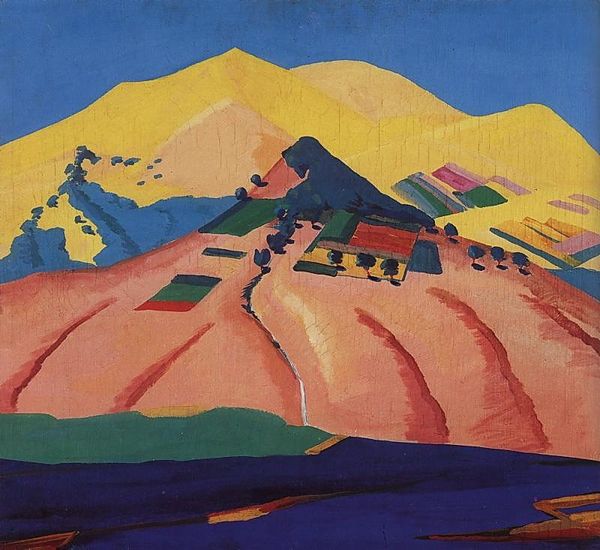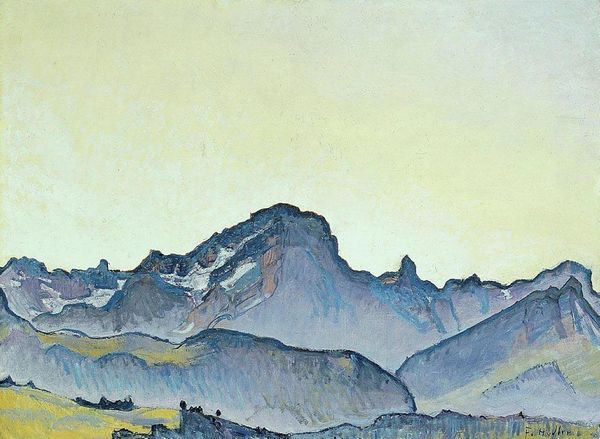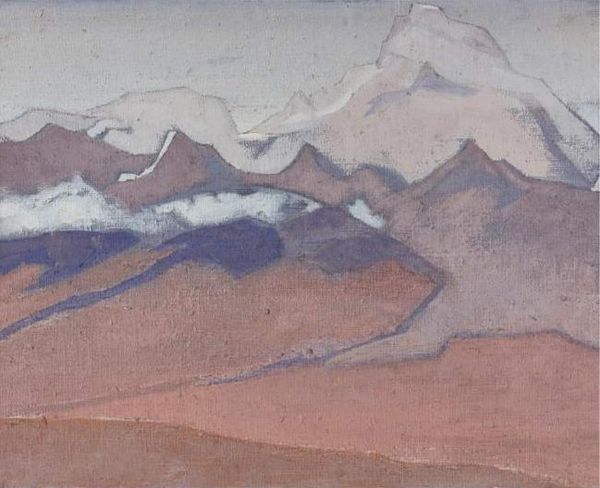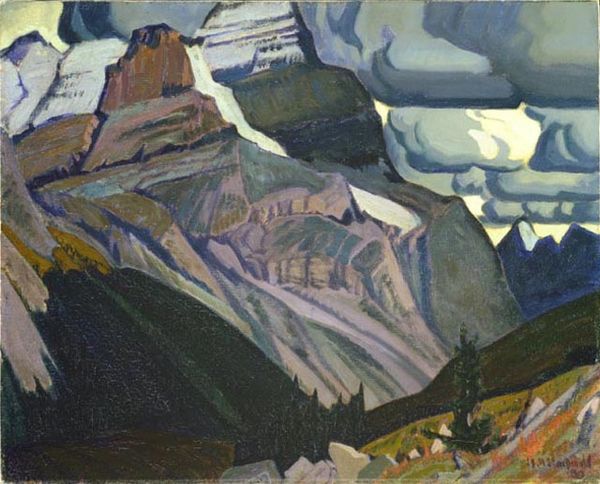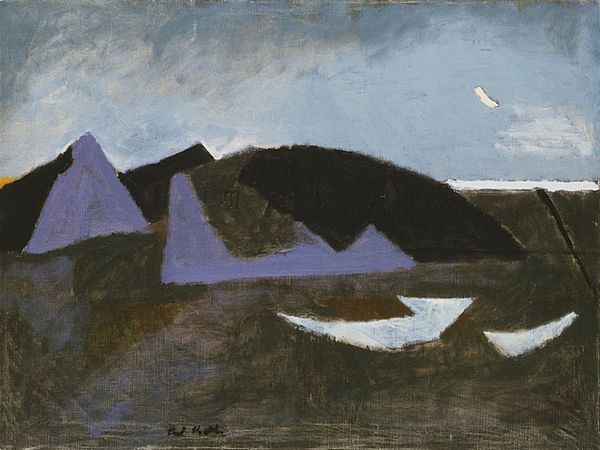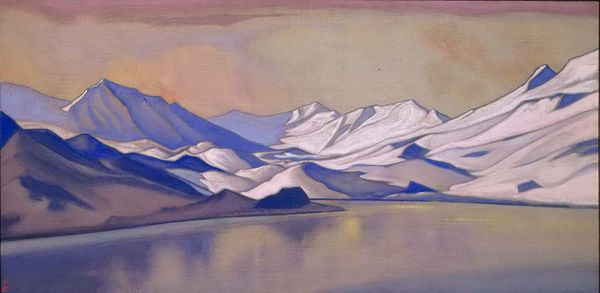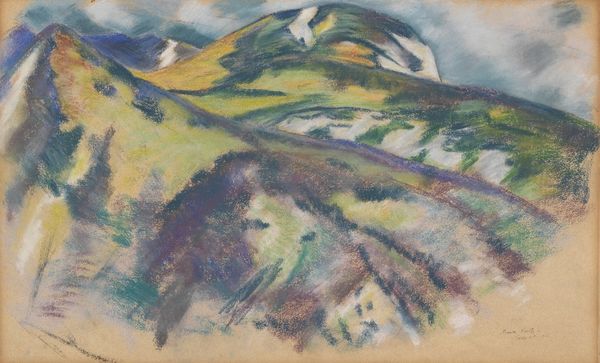
Copyright: Public domain
Curator: So, we’re looking at "Himalayas. Chain of mountains." It’s a pastel piece from 1942 by Nicholas Roerich. Editor: Woah, that hits me right in the gut with a cool blast of serenity. It’s so muted and vast, like a half-remembered dream of a snowcapped giant. Is this some romantic fever dream or what? Curator: Roerich had a complex relationship with romanticism and symbolism. Considering the time it was painted, mid-World War II, this landscape could be seen as an escape, but also as a potent symbol of enduring strength against turbulent times. The Himalayas, as a geographical and spiritual place, represent both refuge and power. Editor: I dig that. Like, art as a sanctuary when the world’s going bonkers. Makes you wonder what inner chaos Roerich was wrestling with. Check out the colors—that pale, ethereal sky against the almost bruising blues of the peaks… it’s moody. You know, kind of like how I feel on Mondays. Curator: The limited palette contributes to the artwork's power, yes, but think about what these icy mountains signified historically and culturally. They stood, and still stand, as barriers, borderlands, sites of spiritual pilgrimage, and reservoirs of natural resources fought over by colonial powers and nation-states. Editor: Oh totally. You get the sense he’s not just painting pretty peaks, right? It's more like an ode to something untamable, maybe even a prayer for resilience? Though, between you and me, I wouldn't wanna try climbing them without a decent Sherpa, political symbolism or not. Curator: Exactly, that's the beauty of art; layers upon layers. This work functions on individual aesthetic and spiritual levels, but it speaks too to much larger social, historical, and political forces at play. Editor: Hmm, thinking about it now, I see those layers too. Beyond the 'ooh, pretty mountains' vibe, there's that quiet demand to acknowledge nature’s sovereignty over, well, everything. Food for thought! Curator: Indeed, Roerich gives us ample scope for contemplation about landscape and the complex dynamics of human agency. Editor: Couldn't have said it better myself. It's a good reminder to find our own metaphorical mountains, climb 'em, and scream into the void—responsibly, of course!
Comments
No comments
Be the first to comment and join the conversation on the ultimate creative platform.
